 W
WKenichi Abe was an ace fighter pilot in the Imperial Japanese Navy (IJN) during the Pacific theater of World War II. In aerial combat over the Pacific, he was officially credited with five solo victories, five joint victories, and two probables.
 W
WVice Admiral Takahide Aioi was commander of the Japan Maritime Self-Defense Force as well as an ace fighter pilot in the Imperial Japanese Navy (IJN) during the Second Sino-Japanese War and the Pacific theater of World War II. In aerial combat over China and the Pacific, he was officially credited with destroying 10 enemy aircraft.
 W
WSadaaki Akamatsu was an officer and ace fighter pilot in the Imperial Japanese Navy (IJN) during the Second Sino-Japanese War and the Pacific theater of World War II. In aerial combat over China and the Pacific, he was officially credited with destroying 27 enemy aircraft.
 W
WLieutenant Colonel Satoru Anabuki was, depending on the source, the second or third highest flying ace of the Imperial Japanese Army Air Force in World War II, with 39 victories. Strangely enough there are 53 claimed victories to be found in his autobiography Soku no Kawa, where his first triple kill was mis-counted as just one.
 W
WIyōzō Fujita was an officer and ace fighter pilot in the Imperial Japanese Navy (IJN) during the Pacific War. He was officially credited with destroying 13 enemy aircraft. During the Battle of Midway alone, he claimed ten aircraft shot down in one day.
 W
WYoshio Fukui was an officer and ace fighter pilot in the Imperial Japanese Navy (IJN) during the Second Sino-Japanese War and the Pacific theater of World War II. In aerial combat over China and the Pacific, he was officially credited with destroying 11 enemy aircraft with four probables. Fukui survived World War II.
 W
WWatari Handa was an officer and ace fighter pilot in the Imperial Japanese Navy (IJN) during the Second Sino-Japanese War and the Pacific theater of World War II. In aerial combat over China and the Pacific, he was officially credited with having destroyed 13 enemy aircraft.
 W
WKaname Harada was a Japanese flying ace of World War II. He was credited with shooting down as many as 19 Allied aircraft between late 1941 and when he was himself downed in October 1942. After recovering from the injuries sustained in this incident, Harada served as a flying instructor for the remainder of the war.
 W
WHatsuo Hidaka was an officer and ace fighter pilot in the Imperial Japanese Navy (IJN) during the Second Sino-Japanese War and the Pacific theater of World War II. Graduating from Kasumigaura Naval Air Group in November 1934, Hidaka joined the first division, the 15th Air Group bound to Hankou as a Petty Officer, 3rd Class on November 1, 1937 bound to Hankou with the flight time of 1,040 hours. During May and July 1943, Hidaka was stationed at Truk Island and often flew to Rabaul airfield on New Britain.
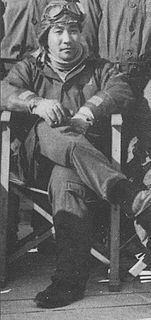 W
WLieutenant Chitoshi Isozaki was an officer and ace fighter pilot in the Imperial Japanese Navy (IJN) during the Second Sino-Japanese War and the Pacific theater of World War II. In aerial combat over China, the Pacific, and Japan, he was officially credited with destroying twelve enemy aircraft. Isozaki survived World War II.
 W
WLieutenant Junior Grade Tetsuzō Iwamoto was one of the top scoring aces among Imperial Japanese Navy Air Service (IJNAS) fighter pilots. He entered the Imperial Navy in 1934 and completed pilot training in December 1936. His first combat occurred over China in early 1938. He emerged as one of the top aces of the Imperial Japan during WWII, credited with at least 80 aerial victories including 14 victories in China. Subsequently, he flew Zeros from the aircraft carrier Zuikaku from December 1941 to May 1942, including at the Battle of the Coral Sea.
 W
WTadashi Kaneko was an officer, ace fighter pilot, and leader in the Imperial Japanese Navy (IJN) during the Second Sino-Japanese War and the Pacific War. Before his death in combat, Kaneko was officially credited with destroying eight enemy aircraft.
 W
WNaoshi Kanno was a Japanese fighter ace in World War II. He is credited with 25 confirmed kills.
 W
WIsamu Kashiide was a Japanese army aviator and flying ace known for achieving the highest number of victories over Boeing B-29 Superfortresses. He claimed to have shot down 26 of the heavy bombers; 7 were later confirmed.
 W
WKanichi Kashimura was an Imperial Japanese Navy Naval Ace of the Second Sino-Japanese and Second World War.
 W
WTateo Katō was a Japanese ace army aviator, credited with at least 18 aerial victories and who was honored posthumously by an award of the Order of the Golden Kite.
 W
WTeruhiko Kobayashi was a Japanese fighter pilot during World War II and a flying ace of the Imperial Japanese Army Air Force. Initially beginning his flying career as a bomber pilot, he rose to fame when he became the leader of 244th Sentai, making him the youngest Sentai leader in the IJAAF when he took command of it in November 1944. He was described as an excellent and charismatic leader by his men and under his command the 244th would become the most famous and successful aerial defense unit in Japan. While leading this unit he achieved five kills in the aerial defense of the Japanese Home Islands. He would survive the war and in 1954 join the newly created Japan Air Self-Defense Force (JASDF).
 W
WYoshinao Kodaira was an officer and ace fighter pilot in the Imperial Japanese Navy during World War II. Participating in many of the Pacific War battles and campaigns as a member of several units, including the fighter units of the aircraft carriers Shōkaku and Chiyoda, Kodaira was officially credited with destroying 13 enemy aircraft. After the war, he served with the Japan Air Self-Defense Force. In 2008, Tsubasa-kai, the veterans' organization of the JASDF, reported his death on its website.
 W
WSadamu Komachi was an ace fighter pilot in the Imperial Japanese Navy (IJN) during World War II. Participating in many of the Pacific War battles and campaigns as a member of several units, Komachi was officially credited with destroying 18 enemy aircraft.
 W
WMasaichi Kondō was an officer and ace fighter pilot in the Imperial Japanese Navy (IJN) during the Second Sino-Japanese War and the Pacific theater of World War II. He graduated from his pilot training class in 1935 and served with four different carrier-based and two different land-based air groups (kokutai) in China and in the South Pacific. In aerial combat over China and the Pacific, he was officially credited with destroying 13 enemy aircraft. He was wounded in a dogfight over the Solomon Islands and spent 15 months in a hospital and survived the war.
 W
WOsamu Kudō was an officer and ace fighter pilot in the Imperial Japanese Navy (IJN) during the Second Sino-Japanese War and the Pacific theater of World War II. In aerial combat over China and the Pacific, he was officially credited with destroying seven enemy aircraft. Kudō was killed in action while participating in an air attack on Broome, Australia on 3 March 1942. He was shot down by ML-KNIL Lieutenant Gus Winckel, who had dismounted the 7.99mm machine gun from his Lockheed Lodestar and balanced it on his shoulder while firing.
 W
WToshio Kuroiwa was a warrant officer and ace fighter pilot in the Imperial Japanese Navy (IJN) during the January 28 Incident and the Second Sino-Japanese War. During the January 28 Incident on 22 February 1932, while assigned to the aircraft carrier Kaga's fighter group, Kuroiwa participated in the IJN's first official shootdown of an enemy aircraft in combat. In the shootdown, Kuroiwa and two other fighters from his unit destroyed a Chinese fighter aircraft piloted by American contract Pilot {Reserve} Lt Robert M. Short.
 W
WAkio Matsuba was an officer and ace fighter pilot in the Imperial Japanese Navy (IJN) during the Second Sino-Japanese War and the Pacific theater of World War II. Matsuba was officially credited with destroying a total of 18 enemy aircraft in aerial combat.
 W
WYoshimi Minami was an ace fighter pilot in the Imperial Japanese Navy (IJN) during World War II. Participating in many of the Pacific War battles and campaigns as a member of several units, Minami was officially credited with destroying 15 enemy aircraft. He was killed in November 1944 attempting to crash his aircraft into enemy ships off Leyte as a participant in Kamikaze operations.
 W
WIsamu Mochizuki was an officer and ace fighter pilot in the Imperial Japanese Navy (IJN) during the Second Sino-Japanese War and the Pacific theater of World War II. He was officially credited with destroying ten enemy aircraft over China and the Pacific. He is famous for inventing the hineri-komi half-loop-and-roll technique that was employed in dogfighting by many Japanese fighter pilots.
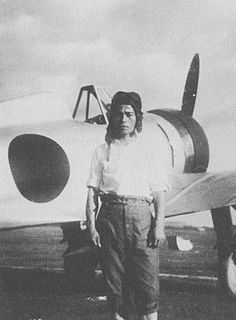 W
WMitsugu Mori was an officer and ace fighter pilot in the Imperial Japanese Navy (IJN) during the January 28 Incident, the Second Sino-Japanese War, and the Pacific theater of World War II. As a member of the 12th Air Group during the Second Sino-Japanese War, Mori was officially credited with destroying four Chinese aircraft in aerial combat.
 W
WKaneyoshi Muto was a Japanese naval aviator and flying ace known for his great skill in fighter aircraft. Fellow ace Saburō Sakai called him "a genius in the air."
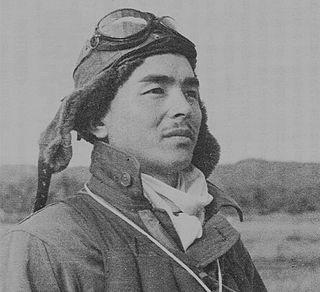 W
WLieutenant Junior Grade Hiroyoshi Nishizawa was a Japanese naval aviator and an ace of the Imperial Japanese Navy Air Service during World War II. Nishizawa was known to his colleagues as 'the Devil' for his breathtaking, brilliant, and unpredictable aerobatics and superb control of his aircraft while in combat. He was a member of the Tainan Kōkūtai's famous "clean up trio" with fellow aces Saburō Sakai and Toshio Ōta and would see action in the New Guinea campaign as well as in the aerial battles over Guadalcanal and over the Solomon Islands. He was killed in 1944 during the Philippines Campaign while aboard an IJN transport aircraft. It is possible that he was the most successful Japanese fighter ace of the war, reportedly telling his last CO that he had achieved a tally of 86 or 87 aerial victories- post war he was linked with scores of 147 or 103, but both of these scores have been considered inaccurate.
 W
WKiichi Oda was an officer and ace fighter pilot in the Imperial Japanese Navy (IJN) during the Second Sino-Japanese War and the Pacific theater of World War II. In aerial combat over China and the Pacific, he was officially credited with destroying nine enemy aircraft.
 W
WMakoto Ogawa is Japanese retired army aviator known for achieving flying ace status against Boeing B-29 Superfortresses during World War II. In carrying out his duties, he downed the highest number of B-29s among the pilots in his air group—seven confirmed—and also two North American P-51 Mustangs. He was awarded the Bukosho, the highest award given by the Imperial Japanese Army to living soldiers who demonstrated exceptionally valorous action in combat.
 W
WKenji Okabe was an ace fighter pilot in the Imperial Japanese Navy (IJN) during World War II. Participating in many of the Pacific War battles and campaigns as a member of several units, Okabe was officially credited with destroying 15 enemy aircraft. Okabe was credited with shooting down eight enemy aircraft on 8 May 1942 during the Battle of the Coral Sea, the IJN's official record for the number of aircraft destroyed in a single encounter. He is famous for his strong opposition to the kamikaze attacks, rare in IJN at the time. Okabe survived the war.
 W
WTakeo Okumura was an ace fighter pilot in the Imperial Japanese Navy (IJN) during the Second Sino-Japanese War and the Pacific theater of World War II. In aerial combat over China and the Pacific, it is said that he shot down 54 enemy aircraft.
 W
WShigetaka Ōmori was an officer and ace fighter pilot in the Imperial Japanese Navy (IJN) during the Second Sino-Japanese War and the Pacific theater of World War II. In aerial combat over China and the Pacific, he was officially credited with destroying 13 enemy aircraft.
 W
WSatoru Ono (1915-2001) was an officer and ace fighter pilot in the Imperial Japanese Navy (IJN) during the Second Sino-Japanese War and the Pacific theater of World War II. In aerial combat over China, the Pacific, and Japan, he was officially credited with destroying eight enemy aircraft. From 1943 until the end of World War II, Ono specialized in nocturnal interceptions of enemy bombers engaged in nighttime bombing raids. Ono survived World War II and died in 2001.
 W
WToshio Ōta was a World War II Japanese fighter ace. In early 1942, at the age of 22, he flew a Mitsubishi A6M Zero with the Lae based Tainan Air Group. There the young petty officer, 1st class became one of the so-called "Clean-up Trio" of Japanese aces, along with his squadron mates Saburo Sakai and Hiroyoshi Nishizawa.
 W
WSub-Lieutenant Saburō Sakai was a Japanese naval aviator and flying ace of the Imperial Japanese Navy during World War II. Sakai had 28-64 aerial victories by official Japanese records, while his autobiography Samurai!, co-written by Martin Caidin and Fred Saito, claims 64 aerial victories. Such discrepancies are common, and pilots' official scores are often lower than those claimed by the pilots themselves, due to difficulties in providing appropriate witnesses or verifying wreckage, and variations in military reports due to loss or destruction.
 W
WLieutenant Commander Junichi Sasai was a Japanese naval aviator and fighter ace of the Imperial Japanese Navy during World War II. Lieutenant (j.g.) (中尉) Sasai was killed leading his fighter squadron during an attack on Henderson Field during the Battle of Guadalcanal.
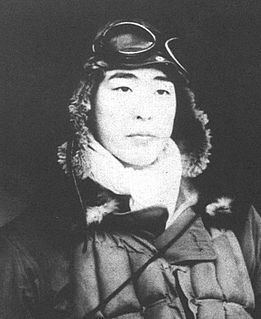 W
WMasao Sasakibara was an ace fighter pilot in the Imperial Japanese Navy during World War II. Participating in many of the Pacific War battles and campaigns as a member of several units, Sasakibara was officially credited with destroying 12 enemy aircraft. He was seriously injured while supporting the Ke operation during the Guadalcanal Campaign, but survived after a lengthy stay in the hospital. He returned to Japan in June 1945 and survived the war.
 W
WYoshio Shiga was an officer, ace fighter pilot, and leader in the Imperial Japanese Navy (IJN) during the Second Sino-Japanese War and the Pacific theater of World War II. At the December 1941 Attack on Pearl Harbor, Shiga led one of the aircraft carrier Kaga's fighter divisions during the first strike on American forces on Oahu. The number of his Zero fighter was AII-105. Shiga continued as a fighter division commander on Kaga until April 1942.
 W
WMasaaki Shimakawa was a warrant officer and ace fighter pilot in the Imperial Japanese Navy (IJN) during the Pacific theater of World War II. In aerial combat over the Pacific he was officially credited with destroying eight enemy aircraft with 12 or 13 assists.
 W
WHideki Shingō was a fighter pilot officer in the Imperial Japanese Navy (IJN) during World War II. He participated in various battles and campaigns throughout the Pacific War and survived the war.
Hiromichi Shinohara 1 August 1913 – 27 August 1939) was the highest-scoring fighter ace of the Imperial Japanese Army Air Service (IJAAF). On 27 June 1939 he set a Japanese record by downing 11 planes on a single day. He was shot down and killed on 27 August 1939, having claimed 58 victories in only three months of combat. He scored all his aerial victories while flying a Nakajima Ki-27.
 W
WAyao Shirane was a fighter ace in the Imperial Japanese Navy (IJN) during World War II. He participated in various battles and campaigns throughout the Pacific War and was eventually shot down and killed over Leyte, Philippines on 24 November 1944. He was officially credited with destroying nine enemy aircraft.
 W
WKiyonobu Suzuki was a warrant officer and ace fighter pilot in the Imperial Japanese Navy (IJN) during the Second Sino-Japanese War and the Pacific theater of World War II. In aerial combat over China and the Pacific he was officially credited with destroying nine enemy aircraft. As a member of the aircraft carrier Jun'yō's fighter group, Suzuki was killed in action on 26 October 1942 during the Battle of the Santa Cruz Islands.
 W
WKazuo Tsunoda was an officer and ace fighter pilot in the Imperial Japanese Navy (IJN) during the Second Sino-Japanese War and Pacific Campaign of World War II. In his combat career, Tsunoda was officially credited with destroying nine enemy aircraft.
 W
WAkira Yamamoto was an officer and ace fighter pilot in the Imperial Japanese Navy (IJN) during the Second Sino-Japanese War and the Pacific theater of World War II. In aerial combat over China, the Pacific, and Japan, he was officially credited with destroying 13 enemy aircraft.
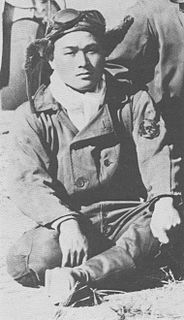 W
WIchirō Yamamoto was an ace fighter pilot in the Imperial Japanese Navy during World War II. Participating in many of the Pacific War battles and campaigns as a member of several units, Yamamoto was officially credited with destroying 11 enemy aircraft. He was killed in aerial combat with American carrier fighters on June 19, 1944 during the Battle of the Philippine Sea.
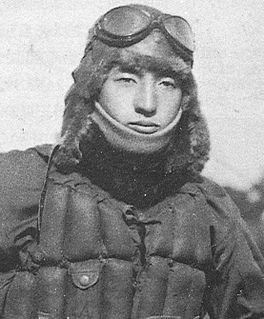 W
WWarrant Officer Kenji Yanagiya was a member of the Imperial Japanese Navy's Zero fighter aces who fought the Battle of Solomon Islands in October 1942 – June 1943. He is best known as the only escort fighter pilot of the Yamamoto mission to survive the war.
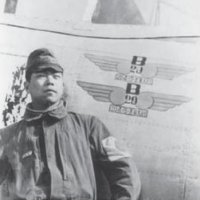 W
WYoshio Yoshida was a Japanese army aviator known for achieving flying ace status against Boeing B-29 Superfortresses. Among pilots in his air group, the 70th Sentai, Yoshida downed the second-highest number of B-29s: six confirmed and one probable. He was awarded the Bukosho, the highest award given by the Imperial Japanese Army to soldiers who demonstrated exceptionally valorous action in combat.